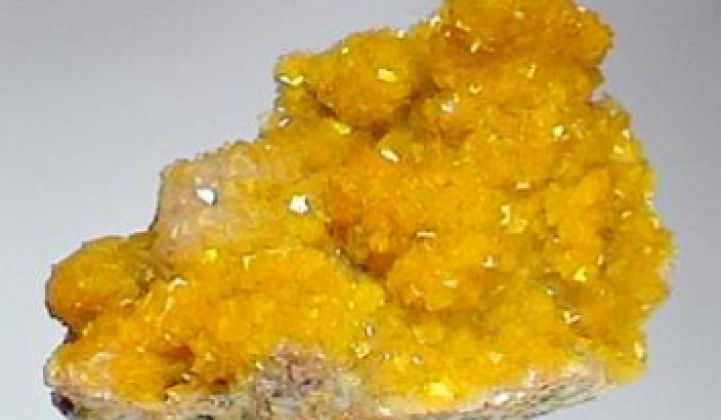Top solar manufacturers are making progress on greening their supply chains and recycling efforts, but a key European Union decision on cadmium could redefine what it means to be good for the environment.
The EU's decision on whether to exempt solar makers from regulations on hazardous chemicals, such as cadmium and lead, could come as soon as next month.
Its repercussions could be profound, particularly for market leader First Solar, which makes a cadmium-telluride thin-film cell. But First Solar is not alone. General Electric and its partner PrimeStar Solar also work with cadmium, as does Abound Solar.
Although solar manufacturers have figured out, and are implementing, ways to eliminate lead, the very nature of cadmium telluride panels make this a persistent problem for these thin film makers without some sort of exemption. An exemption likely wouldn't free them from special handling and recycling duties, but at least they could sell panels.
Industry sources say the EU review may not be finalized until the fall, but the exemption should be decided by the end of June.
In Europe, a voluntary recycling program created to take back spent solar panels is ready to begin, and the number of companies participating has almost doubled, to more than 25.
"This is a key year for PV recycling," says Ben Santarris, public affairs manager at crystalline silicon cell maker SolarWorld, which already plans to eliminate lead in its manufacturing this year.
The program calls on companies to set aside money ahead of time to process the panels they sell, a step Sheila Davis, executive director of the Silicon Valley Toxics Coalition, considers critical for the industry.
Meanwhile, First Solar defends its use of cadmium and has stepped up efforts to monitor the material in its supply chain.
Cadmium is a byproduct of zinc refining and purification, and would go to waste if not used, says Lisa Krueger, vice president of sustainable development at First Solar. More so, by the time it ends up in the cadmium telluride compound First Solar uses, it is very stable and insoluble to water, so it doesn't run off with the rain.
The compound is then placed between two pieces of glass, insulating it from exposure to the environment. "There is very little opportunity for the cadmium to be exposed to people or the environment," says Krueger. "We've done a lot third-party validation."
She also points out that a cadmium-telluride cell takes less energy to manufacture than a crystalline-silicon one. This means the CO2 output is lower -- 14 to 15 grams per kWh of product compared with 28 to 29 for crystalline silicon, she says.
The company is nonetheless stepping up its efforts to monitor its supply chain. "There are things we can do to improve (our) supply chain," acknowledges Krueger. One thing is to peer deeper into the process -- even all the way back to the refiners and purifiers who handle the raw material.
Still, in the long term, it doesn't seem possible that Europe will leave the industry unregulated. "Solar has an impact," says Davis. "If it wants to be green, it needs to proactively address those impacts."



